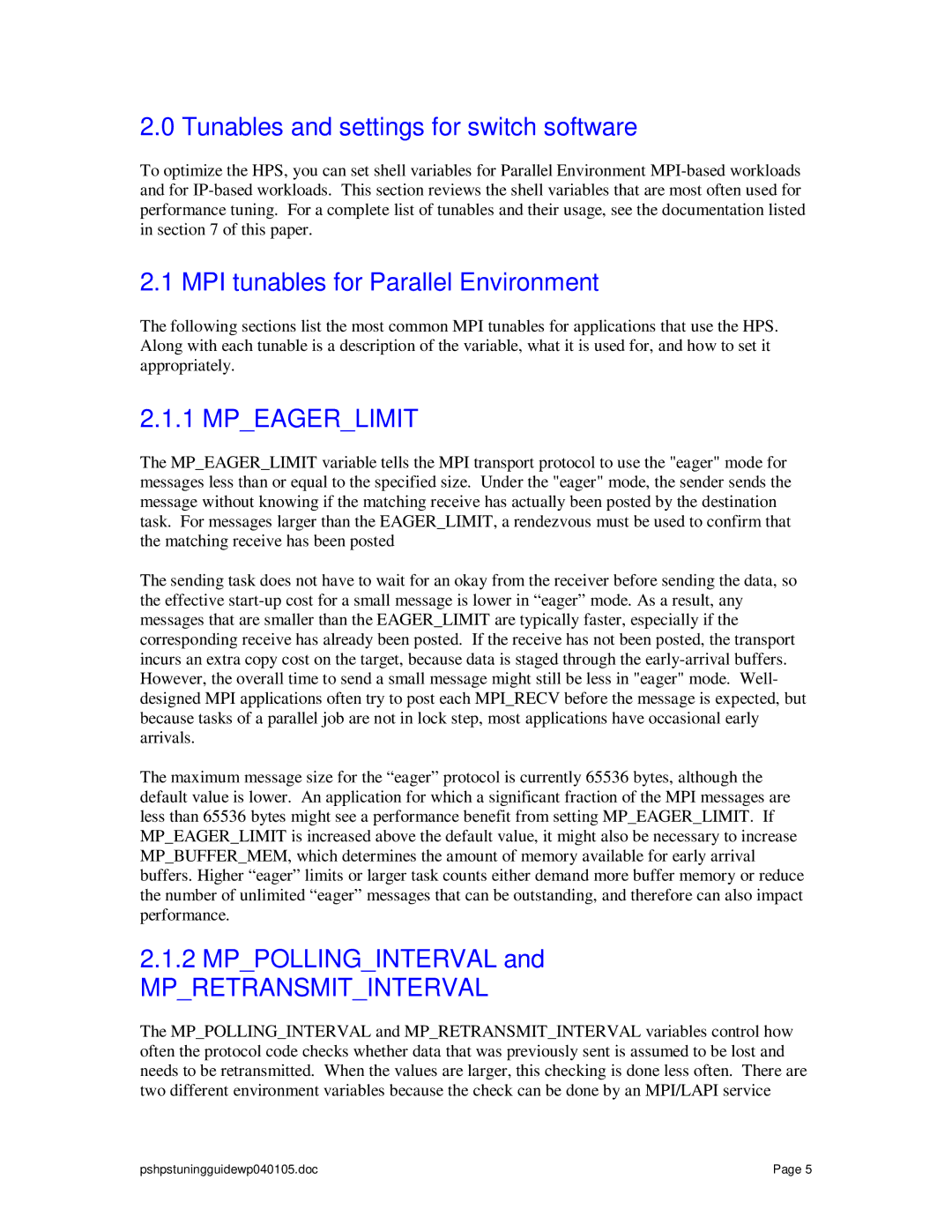2.0 Tunables and settings for switch software
To optimize the HPS, you can set shell variables for Parallel Environment
2.1 MPI tunables for Parallel Environment
The following sections list the most common MPI tunables for applications that use the HPS. Along with each tunable is a description of the variable, what it is used for, and how to set it appropriately.
2.1.1 MP_EAGER_LIMIT
The MP_EAGER_LIMIT variable tells the MPI transport protocol to use the "eager" mode for messages less than or equal to the specified size. Under the "eager" mode, the sender sends the message without knowing if the matching receive has actually been posted by the destination task. For messages larger than the EAGER_LIMIT, a rendezvous must be used to confirm that the matching receive has been posted
The sending task does not have to wait for an okay from the receiver before sending the data, so the effective
The maximum message size for the “eager” protocol is currently 65536 bytes, although the default value is lower. An application for which a significant fraction of the MPI messages are less than 65536 bytes might see a performance benefit from setting MP_EAGER_LIMIT. If MP_EAGER_LIMIT is increased above the default value, it might also be necessary to increase MP_BUFFER_MEM, which determines the amount of memory available for early arrival buffers. Higher “eager” limits or larger task counts either demand more buffer memory or reduce the number of unlimited “eager” messages that can be outstanding, and therefore can also impact performance.
2.1.2MP_POLLING_INTERVAL and
MP_RETRANSMIT_INTERVAL
The MP_POLLING_INTERVAL and MP_RETRANSMIT_INTERVAL variables control how often the protocol code checks whether data that was previously sent is assumed to be lost and needs to be retransmitted. When the values are larger, this checking is done less often. There are two different environment variables because the check can be done by an MPI/LAPI service
pshpstuningguidewp040105.doc | Page 5 |
